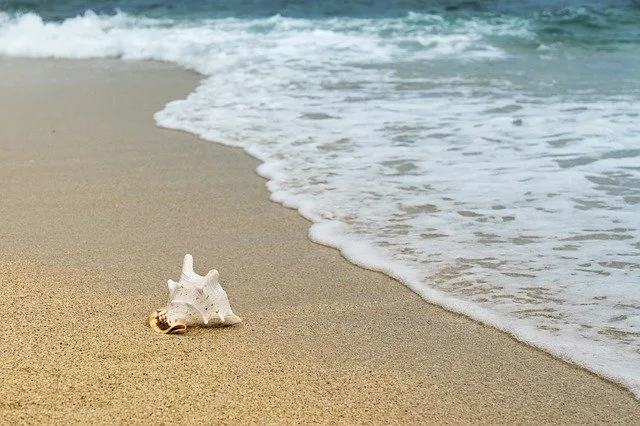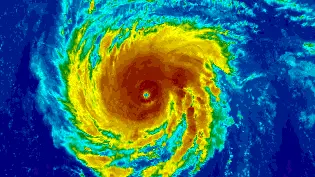Hurricane Season 2023 began June 1st! We want to help you prepare as much as possible to help protect you and your family.
If you need help with restoration and cleanup after Hurricane Idalia, Contact us immediately!

Living along the coastline is a dream for many, and it should be. It’s beautiful! In fact, there is also evidence that there is a link between living near the coast and good health!
If you do live along the coast, however, you had better have a plan in place to prepare for severe weather, especially hurricanes. Hurricanes are massive storm systems that form over the water and move toward land bringing high winds, heavy rain and hail, flooding, and more. Whether it’s a hurricane, or a tropical storm, it’s important that you and your family have a plan in case of an emergency and are ready to evacuate at a moment’s notice.
According to the National Hurricane Center there are two key factors in protecting your family and your home during hurricanes:
- Preparing in advance. Having a family emergency plan and preparing your home
- Acting on those preparations when alerted by emergency officials
Get Our Hurricane Preparedness Checklist!
2023 Hurricane Season Information
When is Hurricane Season 2023?
The 2023 hurricane season runs from June 1st through November 30th. This means that hurricanes commonly occur anytime between those two dates
How many hurricanes are predicted for 2023
Current predictions are showing between 12-17 named storms, with between 5-9 of those being Hurricane level storms during the Atlantic hurricane season. 1 to 4 of these are expected to be major category 3 hurricanes.
Hurricane Preparedness: What to Do Before a Hurricane
Before the storm is the time to start preparing your home and family for the worst. It’s better to overprepare than to underprepare!
1. Make a survival kit
Even if you are not in the direct path of a predicted hurricane, it is worth to keep a 72-hour emergency hurricane survival kit around. Here are some essential hurricane supplies:
- Water and Food for several days in case you’re stuck
- First-aid kit
- Hand crank radio with extra batteries
- Flashlight
- Dust mask
- Wrench or pliers
- Local maps
- Cash
- Batteries
- Medications
- Portable Phone Chargers
- Copies of your important documents in case you need to evacuate your home
2. Prepare Your Home
If you don’t already have storm shutters or storm proof windows, make sure you have everything boarded up to prevent broken and shattered windows.
Trees and branches will fall, so if possible trim or remove damaged trees and limbs before the storm to keep you and your property safe. If you don’t have time to do everything, focus on trees and limbs that are overhanging your house or car(s) to prevent damage to them.
In extreme cases, you want a safe room to protect you and your family. Here are details for a FEMA safe room or ICC 500 storm shelter.
3. Stay updated
If you want to make it a hurricane safely, you have to stay on top of what’s happening as it surges around you. For real-time updates, you can watch local news reports or tune in to emergency radio stations.
Keep an eye on any news stations to know whether or not your area is calling for evacuation. Be prepared for coastal flooding and make sure you know where to go if you are forced to evacuate, including evacuation routes and emergency numbers.

Hurricane Preparedness: What to Do During a Hurricane
Make sure you stay safe during a hurricane, whether you are evacuating or staying in your home.
1. Evacuate when told to
If you hear an order from emergency authorities to evacuate, do not ignore it. Pick up your survival kit and leave as quickly as possible along evacuation routes recommended by the authorities.
However, if the authorities have not issued any order yet or you could not leave the storm area in time, take refuge in a small interior room, closet, or hallway on the lowest level of the home possible and keep your distance from windows and doors. Stay there until you are sure the storm is over.
2. Stay Put In Your Home
Make sure you’re staying at home (unless ordered to evacuate) in your storm safe room. You can check-in during the storm with family and friends using your cell phone, but try to keep it charged as much as possible.
During this time, make sure you’re monitoring Weather and Civil Service Bulletins on either regular or NOAA radio.
And make sure you stay inside when the eye goes over your home, the storm will surge again quickly when the other eye wall hits.
3. Unplug all the electronics
Hurricanes often bring with them thunderstorms that can fry your electronics with a bolt of lightning. They do not have to necessarily strike your house; they can strike near a power line and cause a power surge that might overload the capacity your electronics can deal with. So, make sure you unplug them before the hurricane rages on.
Just in case of power loss, turn the cold settings of your refrigerator and freezer to their highest level so that you lose less of your food.
Hurricane Preparedness: What to Do After a Hurricane
After the storm, you can breathe a sigh of relief – but make sure you’re still staying safe! Even once the storm is over there are often hazards such as downed power lines and high water that can harm you and your family. It is smart to know the right steps to take after storm damage.
1. Stay Safe
Make sure that all everything is completely clear outside, and the storm has completely passed before leaving your room and stepping out, or before returning from evacuation.
Stay where you are and do not attempt to leave your home or shelter until you have heard from authorities declaring your area out of danger.
2. Check In
If possible, check in with your family and friends via social media or phone calls. Make sure everyone’s okay and reassure them that your family is safe.
3. Report hazards
There may be downed power lines, ruptured gas lines, broken water mains, overturned gas tanks, contaminated water, or damaged structures in the wake of a hurricane. Make sure you report any hazards like these as soon as you come across them.
Make sure to take pictures of your own damaged property to help with the insurance filing process later on.
4. Stay away from flood waters
Long after the area is declared safe, there may still be hazardous debris lurking under the deceptively calm flood water. Downed power lines can also electrically charge the water, leading to a risk of electrocution. Driving your car through water can cause water to get into the engine and shut it off.
5. Be patient and stay positive
Hurricane survival demands a hopeful attitude and a whole lot of patience. Stop, breathe, and keep a cool head while the hurricane passes through your area.
The most important thing is to keep everyone safe!
Read our comprehensive hurricane plan here
How to Prepare for a Hurricane in an Apartment
- Living in an apartment complex has its own set of problems when it comes to hurricane preparedness. The first thing you should do is ensure that the apartment is in good working order and safe to shelter-in-place. Bring anything from outside patios and balconies, such as garden furniture, planters, and other items indoors.
- Next, make sure you have shutters or panels on all of your glass doors and windows. If you’re a renter, find out if your landlord offers them and who will install them before the hurricane approaches.
- Find a parking spot that’s safe for your car. Assess your assigned parking place and, if required, transport your vehicle to a different location if necessary due to the possibility of floodwater or falling debris.
- Store food and water in cabinets, closets, or under beds. Space in apartments is often limited so storing your supplies may be challenging.
- When the wind becomes dangerous, identify your safest location, such as an interior bedroom or bathroom, and remain there when wind picks up. Consider if there’s a lower-floor option to shelter.
Hurricane Preparedness Resources
FEMA – How to Prepare For A Hurricane
READY.GOV – Plan Ahead For Disasters
If you find yourself affected by a major storm or hurricane,
contact our professionals at Jenkins Restorations for all hurricane repairs and hurricane restoration!
Frequently Asked Questions
What damage can be done by a typhoon?
A typhoon can cause severe damage to property and life. The strongest storms can reach speeds of up to nearly 200 miles per hour, which causes massive destruction. If you live near the coast, you should prepare for the possibility of flooding, landslides, and power outages.
Does hurricane strength always determine how much damage is caused?
Hurricane strength is determined by wind speed and pressure. The higher the wind speed and lower the pressure, the stronger the storm. However, the amount of rain and flooding depends on several factors such as the size of the area affected, the terrain, and the intensity of the storm.
How long does storm surge last?
Depending on the track and size of the storm, storm surge can last for several hours. The water level can rise up to 20 feet or more above sea level. After the storm passes, the water will begin to recede back to normal levels.
